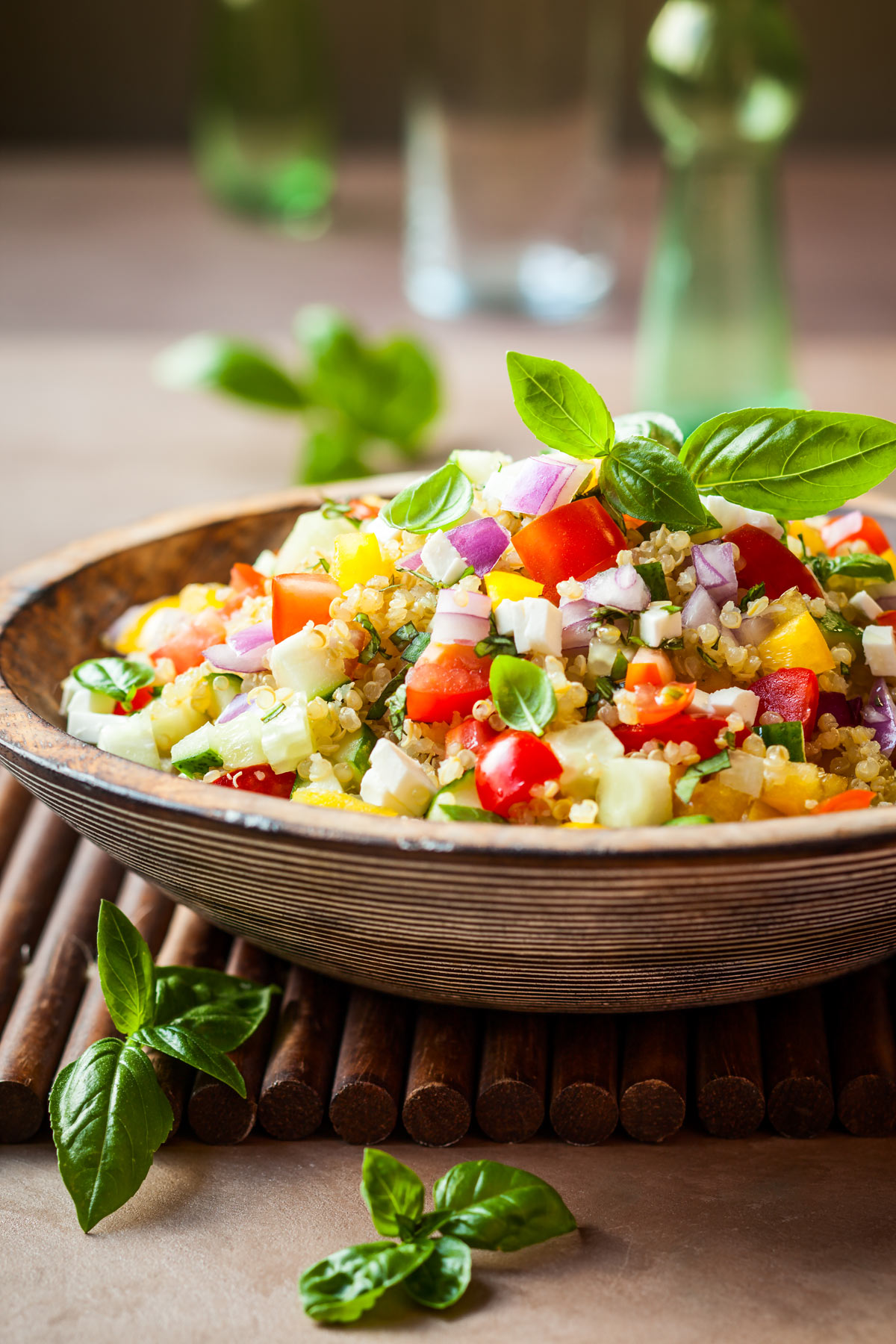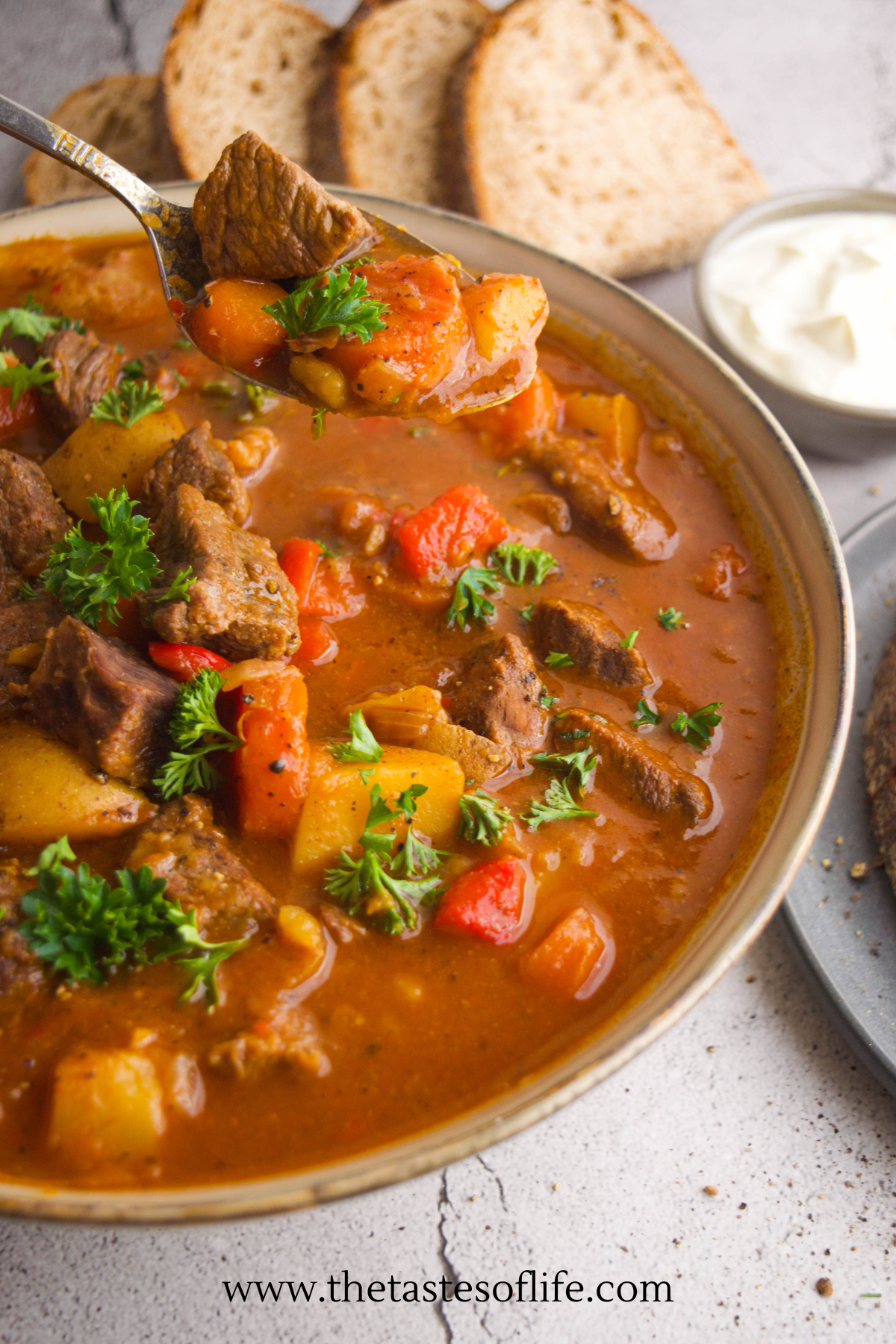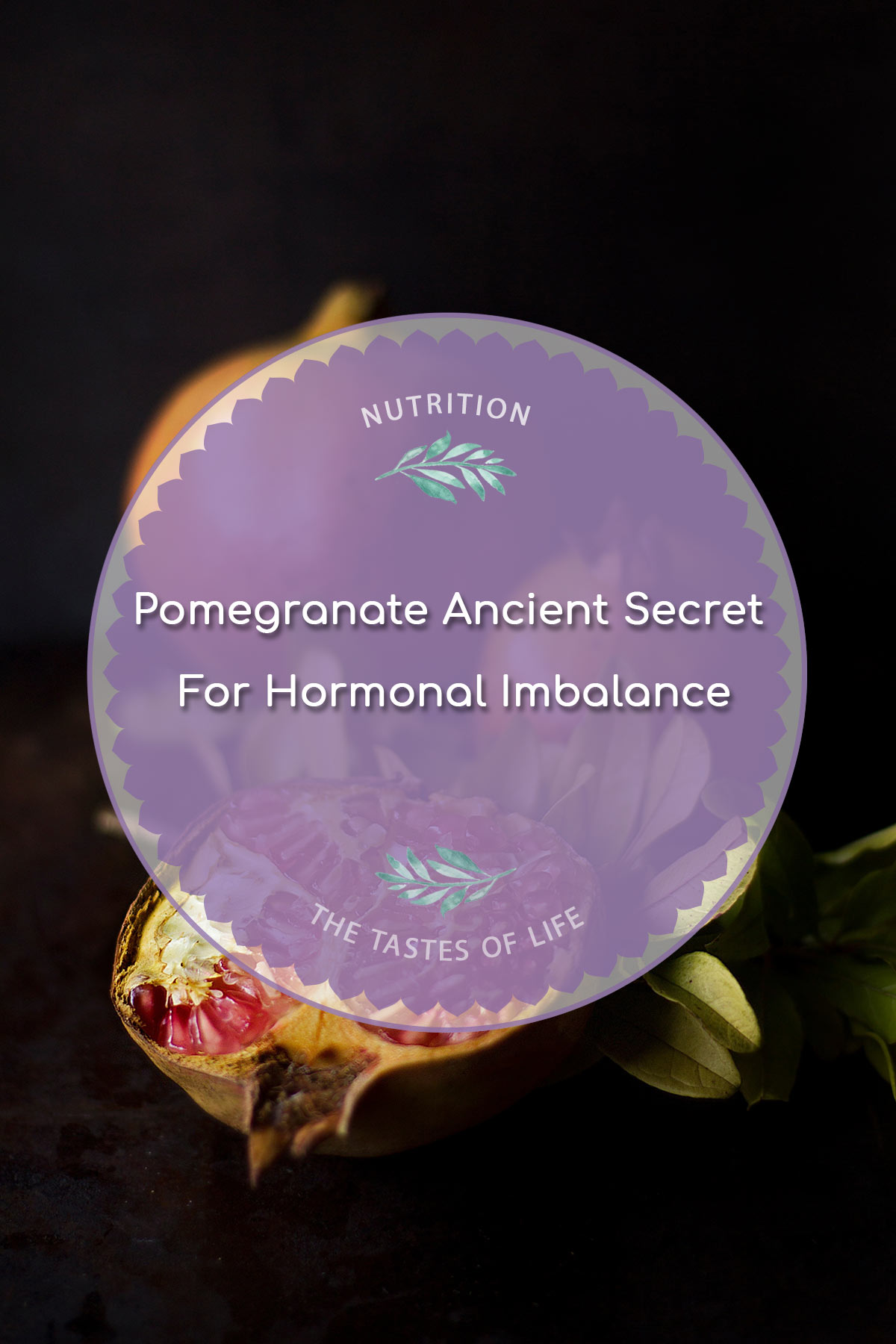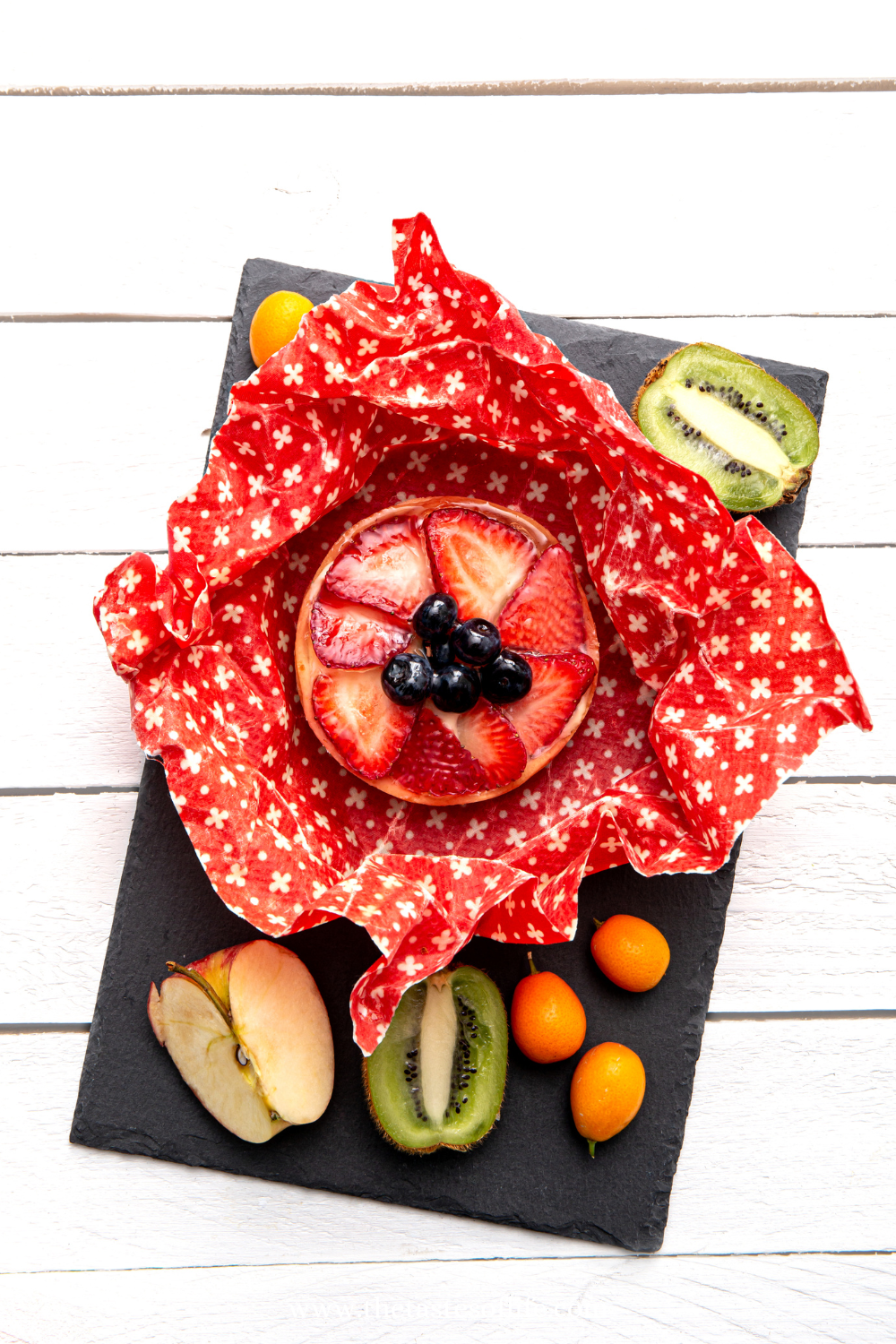How to Create a Non-Toxic Kitchen
Sharing is caring❤️
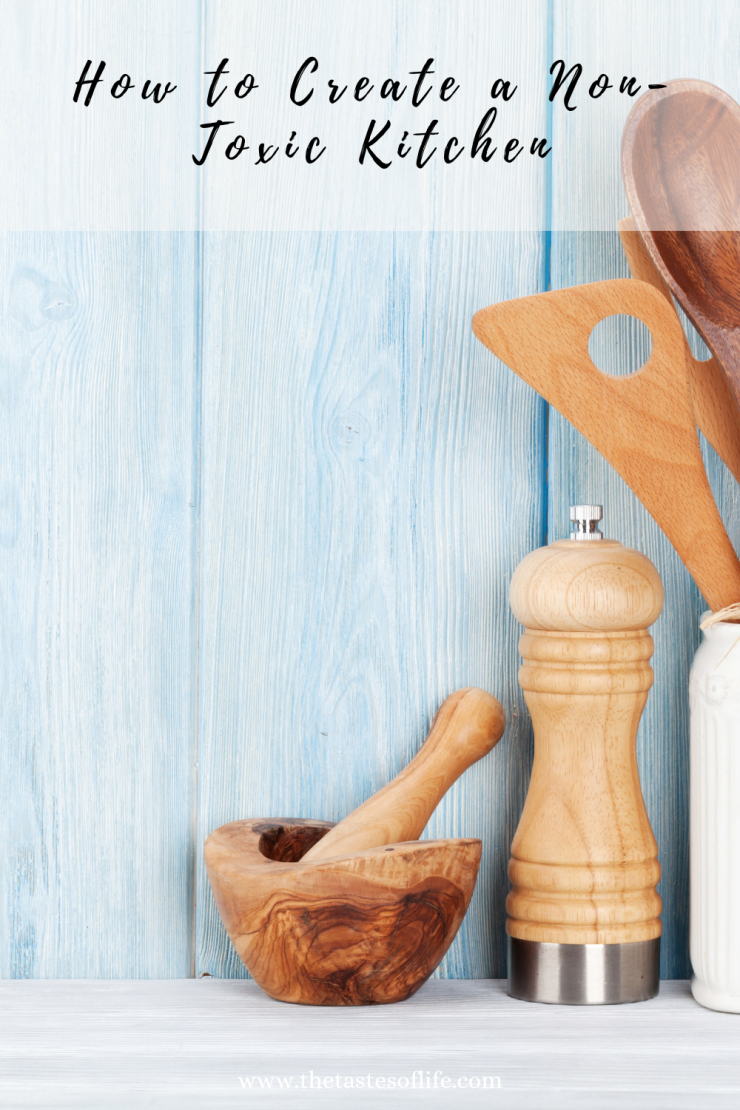
How to Create a Non-Toxic Kitchen
Reducing toxins in the kitchen is essential for our health. Using non-toxic cookware, bakeware, and utensils is a great place to start to have a non-toxic kitchen. If you care about organic food, it should be natural to reevaluate your choices in what you cook.
Investing in safe cookware and kitchen accessories ensures that every meal made at home positively impacts you and your family’s health. Simply put, it doesn’t matter if you buy organic meat or produce only to cook in pots that are leaching harmful chemicals.
Those of us with allergies understand the importance of a safe environment. Imagine a seemingly innocuous kitchen, yet hidden dangers could compromise our wellbeing. Toxins, invisible to the eye, lurk in the very items we use to prepare our meals. We often associate food allergies with the ingredients on our plates, but have we considered the cookware and cleaning products that come into contact with our food? Recognizing and eliminating these hidden adversaries for allergy prevention is imperative to enhance overall health and ensure a toxin-free lifestyle.
From the pans on our stovetops to the utensils in our drawers, our kitchens may harbor materials that release harmful substances under the guise of convenience. These toxins can stealthily seep into our food, potentially triggering allergic reactions and sensitivities that can cause long-term health issues. Chemicals like BPA and Teflon were once hailed for their utility, but they now raise concerns amongst health-conscious individuals. This realization compels us to scrutinize every aspect of our cooking and cleaning regimen, insisting on nontoxic options as the only acceptable standard.
Embracing nontoxic cookware, bakeware, and chemical-free dish soap isn’t a fleeting trend—it’s a commitment to health and the wellbeing of those affected by allergies. As someone who strives for an allergy-friendly kitchen, my quest for knowledge and safer alternatives is relentless. Unlocking the secrets to toxin-free cooking is a personal victory and a shared triumph for anyone embarking on this path to a healthier lifestyle. Thus, it becomes clear why making informed decisions about our kitchenware is prudent and necessary.
What is a Non-Toxic Kitchen
In my approach to a wellness-focused lifestyle, I always emphasize the term ‘nontoxic’, particularly when selecting kitchenware and cleaning agents. In this realm, ‘nontoxic’ signifies that the items are devoid of substances that could harm our health or the environment. These products are made without lead, BPA, Teflon, PFOA, PFAS, and other hazardous chemicals commonly found in conventional cookware and cleaners that create many health problems.
The significance of opting for non-toxic kitchen items in the kitchen goes beyond just personal health. By choosing to use such products, we support sustainable practices that have a lesser impact on the planet. For me, cooking with nontoxic cookware doesn’t just ensure my meals are free from chemical contamination and have significant health benefits, but it also aligns with my goal to minimize the environmental burden of my household’s daily routines.
Moreover, with the alarming rise in allergies and sensitivities, it’s crucial for those of us particularly vulnerable to consider nontoxic options as a proactive step towards a safer home environment. These choices often lead to better indoor air quality and can mitigate allergic reaction risks, contributing to overall wellbeing. Integrating nontoxic cookware and cleaning products is a conscious decision towards nurturing a healthier, more sustainable home for me and my loved ones.

The Allergy Factor: Toxic Exposures and Why Non-Toxics Matter
I maintain a meticulously non-toxic kitchen, which stems from more than a preference—it’s a necessity due to my sensitivities and allergies to chemicals. This sensitivity has made me acutely aware of how kitchen toxins can exacerbate allergies, creating an invisible threat that can affect both the allergy-prone and the seemingly unaffected alike.
For those with allergies, everyday kitchenware can be a hidden source of exposure to harmful chemicals. For instance, cooking with a Teflon-coated pan might release PFOA. This chemical can trigger allergic reactions or can be a cause of breast cancer in the long run. and even has longer-term health consequences. Baking in containers with BPA or using utensils with phthalates can leach toxins into food under high temperatures. The result? Allergy symptoms can flare up, and consistent exposure might increase the risk of developing more severe conditions over time.
It’s not an overstatement to say that what you cook with matters! By choosing allergy-friendly kitchen options, like nontoxic cookware, bakeware, and chemical-free dish soap, you fortify your cooking environment against unwanted reactions. This proactive approach paves the way for healthier cooking experiences, safeguarding your meals and wellbeing.
Common Toxins Lurking in Cookware
Discovering the hidden dangers in what should be the heart of a healthy home can be disconcerting, but I firmly believe in shedding light on the truth for the sake of wellness. As I dive into the world of cookware, it becomes clear that certain substances we’ve been accustomed to may pose health risks. One notorious example is Teflon, the brand name for a chemical coating used to create non-stick surfaces. While Teflon simplifies cleaning, it contains PTFE (polytetrafluoroethylene) and, if overheated, can release toxic fumes capable of causing flu-like symptoms known as “Teflon flu.”
Another concerning substance is BPA (bisphenol A), often found in plastic kitchenware and can liners. BPA is an industrial chemical that can leach into food and beverages, particularly when heated and is linked to effects on the brain, behavior, liver damage, hormonal issues, and prostate gland in fetuses, infants, and children. There’s also aluminum cookware, which, while excellent for heat conductance, can potentially leach into foods, posing a concern for nervous system impacts over long-term exposure.
Copper cookware presents a double-edged sword, lauded for its superior heat distribution, but can release copper into the food, leading to toxicity with excessive intake. While most modern ceramics are safe on the ceramic front, older or poorly manufactured ceramics can harbor lead, which could mix with your food and is toxic even at small levels, particularly to children. Each of these materials, while common, carries the weight of potential health implications, nudging us to consider alternatives that prioritize our health and the environment.

Toxins to Avoid While Baking
I’ve made a conscious effort to eliminate toxic substances from my bakeware because the last thing I want is for harmful chemicals to leach into my food, especially given my allergies. Avoiding toxins isn’t just a preference; it’s a necessity for me.
Common culprits in bakeware are Teflon and other non-stick coatings, which can release toxic fumes when overheated. I also steer clear of aluminum bakeware, which has been linked to health risks if the metal leaches into food. Another toxin I watch out for is lead, which can sometimes be found in the glazes of ceramic bakeware and can be particularly hazardous.
· Non-stick Coatings: These can release PFOA, a suspected carcinogen, especially at high temperatures. Alternative materials include stainless steel and silicone bakeware.
· Aluminum: A reactive metal that may leach. Glass or coated cast iron are safer options.
· Lead in Ceramics: Can contaminate food. Look for lead-free labels, or choose unglazed stoneware.
In place of these, I’ve found success with glass, cast iron, stoneware, and silicone options. Glass is naturally nontoxic and doesn’t react with foods, making it an excellent choice for baking. Silicone bakeware is flexible, non-stick, without hazardous chemicals, and withstands various temperatures. Stoneware, as long as it’s labeled lead-free, and cast iron are also good options I’ve integrated into my baking with great results without compromising health or flavor.
Non-Toxic Kitchen: Dish Soap and Cleaning Supplies Dilemmas
In pursuing a healthier lifestyle, I discovered that the substance I used to clean my dishes or countertops could undermine my efforts. Dish soaps and cleaning supplies are often filled with a cocktail of chemicals. The skin, an absorbent organ, can unwittingly introduce these chemicals into our system simply by washing dishes. For those of us with allergies, this exposure can worsen our condition, triggering unwanted reactions, including reactions from the smell of dish soap!
Among the questionable ingredients, phosphates stand out. These compounds can cause ecosystem imbalances when they enter our waterways. Synthetic fragrances, another common addition, can contain phthalates linked to hormonal disruptions.
Furthermore, triclosan, an antimicrobial agent in some dish soaps, has been scrutinized for contributing to antibiotic resistance and affecting thyroid function.
With this knowledge, I consciously decided to transition to chemical-free dish soap. These alternatives often rely on plant-based ingredients and essential oils for their cleaning power and scent. Awareness of harmful substances and opting for toxin-free options is a small but powerful step toward a safer, non-toxic kitchen.
Top Dish Soap Ingredients to Avoid
· Sodium Lauryl Sulfate (SLS) & Sodium Laureth Sulfate (SLES): These are surfactants that can cause skin irritation and are potentially contaminated with carcinogenic by-products.
· Triclosan: Often used for its antibacterial properties, this chemical can disrupt thyroid function and contribute to antibiotic resistance.
· Phthalates: Frequently hidden under the term’ fragrance,’ these endocrine disruptors can interfere with hormone function.
· Parabens: Used as preservatives, parabens can mimic estrogen and potentially lead to hormonal imbalances.
· Chlorine: Present in some dishwashing detergents, chlorine can irritate the skin and respiratory system.
· Ammonia: A powerful irritant that can affect the skin, eyes, and respiratory system, especially problematic when mixed with other cleaners.
· Formaldehyde: Sometimes found in cleaning products, it is known to be a carcinogen and can cause allergic reactions.
· Ethanolamines (MEA/DEA/TEA): Associated with organ system toxicity, these can react with other chemicals to form carcinogenic nitrosamines.
· 1,4-Dioxane: A substance that may be present in dish soaps due to its use in manufacturing processes, classified as a probable human carcinogen.
· Synthetic Colors: Additives use to make products visually appealing but can cause skin irritation and carry contamination concerns.
Toxic-Free Cookware
I recognize the stakes when I select cookware for my home. Using nontoxic pots and pans offers peace of mind, knowing that my family and I aren’t ingesting harmful substances with our home-cooked meals. Nontoxic cookware typically means pieces free from perfluorooctanoic acid (PFOA), polytetrafluoroethylene (PTFE) – also known as Teflon, lead, cadmium, and other chemicals that can leach into food at high temperatures or degrade over time.
Stainless steel is a safe option due to its inert and durable properties. It doesn’t react with acidic foods or release harmful toxins, making it a stalwart in health-centered kitchens. Similarly, cast iron skillets avoid hazardous chemicals and have the added bonus of fortifying food with iron, which is essential for blood health. Additionally, glass bakeware conducts heat evenly and is naturally non-reactive, thus perfect for casseroles and roasts.
Other materials I trust include ceramic cookware, which, when lead-free, offers a non-stick surface without the risks associated with Teflon. Silicone utensils and bakeware can withstand high temperatures without emitting fumes or leaching chemicals.
Adopting these materials in your non-toxic kitchen lowers the risk of chemical exposure. It aligns with a growing interest in sustainability and healthful living.
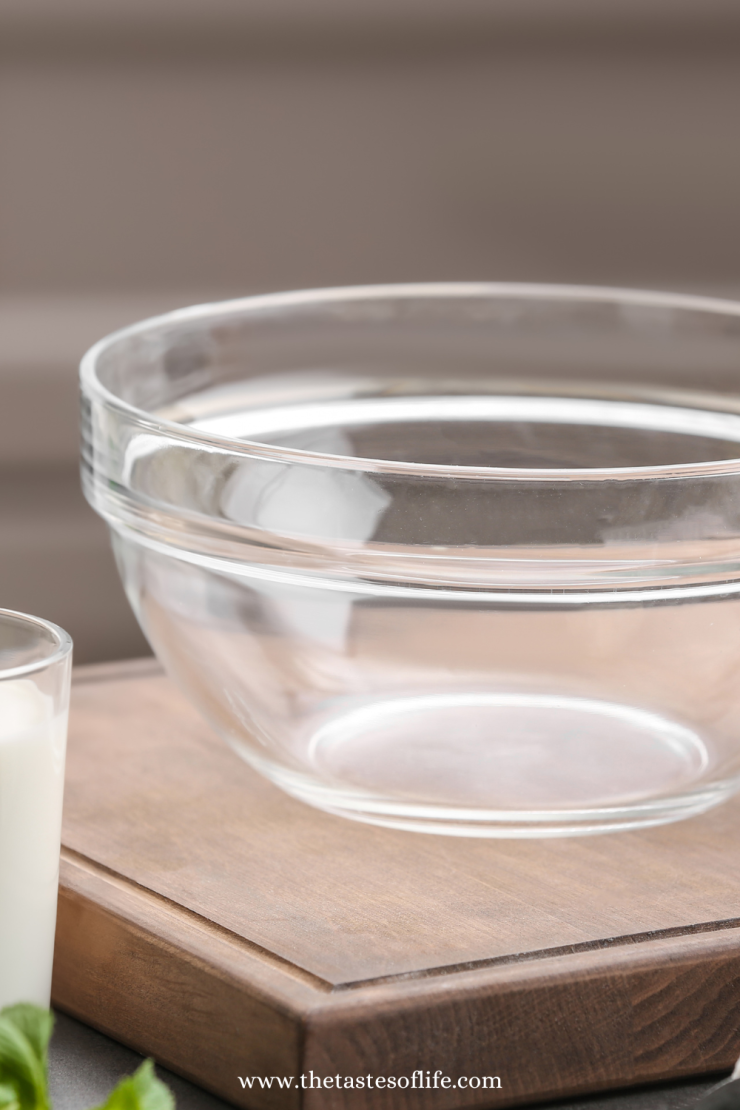
Nontoxic Bakeware Materials
Opting for nontoxic materials in bakeware is crucial, not just for allergy sufferers, but for anyone aiming to create a healthier, non-toxic kitchen. Glass stands out as a top choice, as it doesn’t release harmful chemicals when heated and is incredibly versatile. Glass bakeware is a staple in a nontoxic kitchen and safe for both oven use and food storage.
Another safe material is silicone, which has gained popularity due to its non-stick properties and heat resistance up to high temperatures. Choosing high-quality, food-grade silicone is essential to avoid additives that may compromise its safety.
Ceramic bakeware, especially versions labeled as lead-free, offers a nontoxic option that doesn’t leach harmful substances. Ceramics provide excellent heat distribution for even baking and often come in attractive designs suitable for serving straight from the oven.
Although less common for bakeware, stainless steel is an exceptional choice due to its durability and absence of surface coatings that could break down under heat. It’s an especially ideal option for baking sheets and roasting pans.
Also, silicone bakeware is a good alternative.
Do not bake with aluminum foil because it leaches into the food, and aluminum is a well-known neurotoxin. Use parchment paper but not the white one because it bleached.
Lastly, unglazed stoneware provides a reliable, natural option free from chemicals. Stoneware offers steady heat distribution and retention and is perfect for artisanal bread and pizza crusts with a crisp finish.
Each of these materials ensures a safer baking experience, free from the concerns that accompany traditional non-stick coatings and potential toxins. By selecting these nontoxic options, you can trust that your bakeware contributes to a safe non-toxic kitchen environment.
Labels and Certifications Demystified
Making informed choices about kitchenware begins with understanding the labels and certifications that signify safety. You should become familiar with several key endorsements. Firstly, products stamped with “BPA-free” indicate that the item does not contain bisphenol A, a chemical often linked to health issues when leaching from containers into food. Items labeled as “lead-free” ensure that there’s no risk of lead contamination, which can be particularly important when selecting ceramics.
Another significant label is “PFOA-free” or “PFAS-free.” These acronyms stand for perfluorooctanoic acid and per- and polyfluoroalkyl substances, respectively. Both have been associated with environmental and health concerns and products without these chemicals are considered safer options.
Certifications to look for include the Green Seal, which highlights products that meet rigorous, science-based environmental standards. The Cradle to Cradle Certified™ mark identifies items designed with eco-friendly materials and methods.
Additionally, the “Teflon-free” label indicates no polytetrafluoroethylene, which may release toxic fumes when overheated.
· USDA Organic: Specifies products produced without pesticides, synthetic fertilizers, or genetically modified organisms.
· Energy Star: Points to energy-efficient appliances that aid in reducing utility bills and environmental impact.
· EcoLogo: Identifies products that have a reduced ecological footprint during their lifecycle.
· NSF: Items with the NSF mark have been tested to comply with public health and safety standards.
Familiarizing yourself with these labels and certifications greatly assists in selecting kitchenware that aligns with a commitment to health and sustainability.
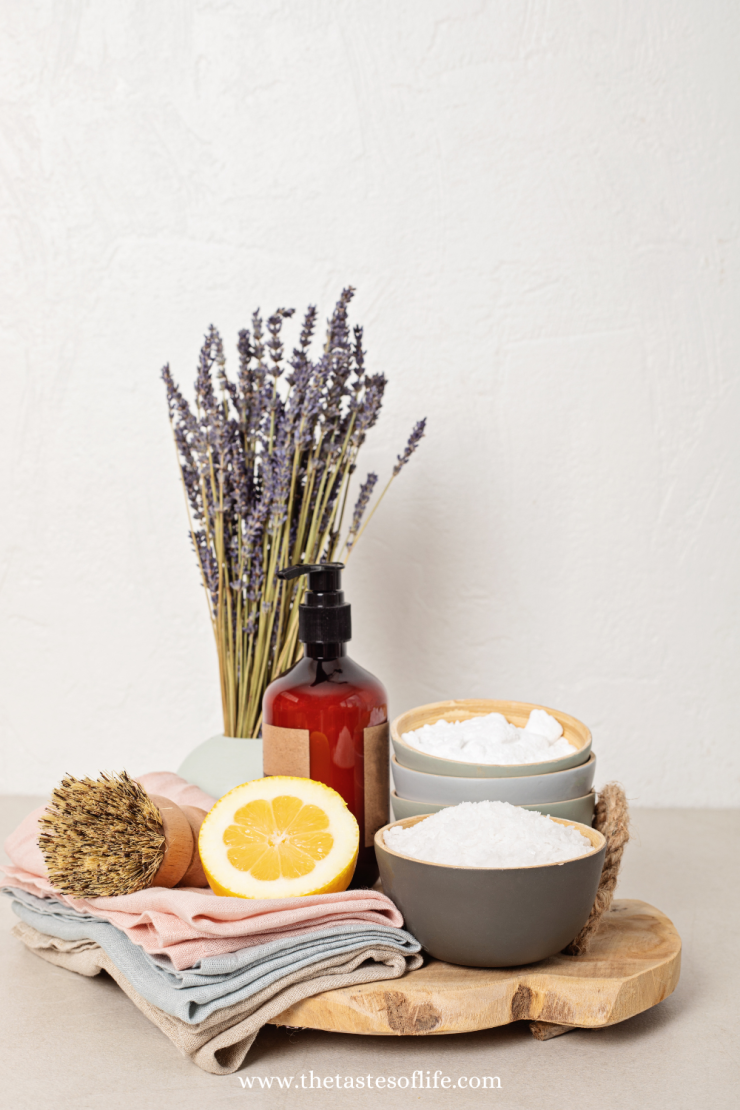
Alternative Cleaning Solutions for Your Non-Toxic Kitchen
· Vinegar: Mix equal parts of water and white vinegar to create a versatile cleaning solution, perfect for removing grease and odors.
· Baking Soda: Use as a scouring agent for tough stains and buildup in sinks or on countertops. It also neutralizes odors.
· Castile Soap: Biodegradable and vegetable-based, it is gentle yet effective for a variety of cleaning tasks.
· Lemon Juice: Its natural acidity provides antibacterial properties, and it leaves a fresh, citrus scent.
· Essential Oils: Add to vinegar or baking soda mixtures for added antimicrobial benefits and aromatic fragrances. Tea tree, eucalyptus, and lavender are popular choices.
· Hydrogen Peroxide: A fantastic disinfectant for cutting boards and surfaces; just be sure to store it in a dark bottle to maintain its effectiveness.
· Cornstarch: Mix with water to clean windows, polish furniture, and shampoo carpets and rugs.
· Salt: Coarse salt can serve as an abrasive for scrubbing pots and pans.
· Soap Nuts: These berry shells contain a natural soap, saponin, which lathers when mixed with water and can be used as an organic detergent.
· Borax: Sprinkle in toilets or on floors before scrubbing for added cleaning power. Always handle with care and follow safety guidelines.
The Perils of Plastic
Plastic substantially impacts our health, and our non-toxic kitchen should not have any plastic in it. I got rid of plastic in my kitchen right after starting my health journey.
Bisphenol A (BPA) exposure is a significant concern with using plastic items in your kitchen. This industrial chemical in polycarbonate plastics makes containers that store food and beverages. BPA can leach into food, especially when plastic comes into contact with hot items or is microwaved, a process many of us might not even realize could harm our health.
Research indicates BPA can mimic estrogen, disrupt hormones, and potentially lead to a range of health issues. In particular, there’s a growing consensus in the medical community about BPA’s effects on the endocrine system, which might increase the risk of certain cancers, impact brain development in fetuses and young children, and lead to heart complications.
Alternatives to BPA include using products made of stainless steel, glass, or certified BPA-free plastics. Recognizing BPA-free products usually involves checking the bottom of the container for the recycling code. Codes “1,” “2,” or “5” generally indicate that the product is less likely to contain BPA. However, it’s imperative to remain cautious as other harmful chemicals might be present, even in BPA-free items.
Minimizing Risks is not merely about avoidance but also about adopting safer usage patterns. For instance, never heat food in plastic containers, even if they are marked ‘microwave safe,’ as heat can cause chemical leaching. Instead, opt for ceramic or glass when heating or storing hot food. Furthermore, regularly examining your plastic cookware for scratches and wear is essential, as these kinds of damages can increase the likelihood of chemicals leaching into your food.
Maintaining a toxic-free kitchen not only enhances your food’s flavor but, more significantly, ensures you are taking meaningful steps towards safeguarding your health and the wellbeing of your family by reducing exposure to potential endocrine disruptors like BPA.

Great Alternatives: Non-toxic Kitchen Utensils and Gadgets
In pursuing a toxic-free kitchen cooking experience, I’ve turned to utensils and gadgets promoting safety and health and focused on non-toxic cooking utensils. Use stainless steel utensils such as spatulas, tongs, and ladles, highly resistant to corrosion and incredibly durable, form the backbone of my kitchen tools. They withstand high temperatures without releasing harmful substances, making them an integral partner in my culinary adventures. No plastic spatulas or plastic spoons, especially when you are putting it in something hot!
Please stay away from plastic cutting boards. You will get plastic particles in your food. My favorites are just solid wood cutting boards.
Wooden spoons and cutting boards take center place next to their metal counterparts. Wood, a natural and renewable resource, is gentle on cookware and doesn’t leach chemicals into food. By eschewing plastic utensils, I also steer clear of BPA and other potential toxins commonly found in plastic products. I love my wooden utensils, especially the bamboo ones.
Silicone baking mats and spatulas cater to my baking needs, ensuring a nontoxic and non-stick surface that can endure oven heat without degrading or contaminating my treats. These reusable options not only reduce waste in my kitchen but also safeguard my health.
For tasks demanding precision, ceramic knives prove indispensable. Their inert nature means they won’t react with food, preserving flavors and nutrients. Additionally, they retain sharpness longer than their metal counterparts, requiring less frequent sharpening.
Last, I’ve embraced glass or stainless steel as my go-to material for measuring cups and storage containers. Impermeable to odors and stains, glass won’t absorb food residues or harbor bacteria, giving me peace of mind whenever I prepare or store meals.
Making the Switch: Transitioning to a Non-Toxic Kitchen
Making a transition to a non-toxic kitchen can be manageable. Begin by assessing the cookware and bakeware you frequently use. Identify pieces that are scratched, non-stick, or made from questionable materials. As these wear out or you decide to replace them, choose products crafted from safe materials like stainless steel, cast iron, or glass.
Inspect your utensils and gadgets next. Plastic items should be swapped for silicone, wooden, or stainless steel versions, especially those showing signs of wear. These alternatives not only last longer but are also less likely to leach chemicals into your food.
Scrutinize your food storage solutions as well. Gradually phase out any plastic containers, particularly those that are not BPA-free. Glass containers with secure lids are a sustainable and safer choice. They are durable and do not harbor harmful chemicals that could contaminate your food.
Reevaluate your cleaning products. Many dish soaps contain harsh chemicals that can linger on your cookware and dishes. Transition to organic or plant-based soaps that are free from parabens, sulfates, and synthetic fragrances. These gentler alternatives protect your skin and health without compromising cleaning power.
Lastly, extend your nontoxic approach to bakeware. Replace items made with PFOA or PFAS coatings with toxin-free alternatives. Options include ceramic, stainless steel, or silicone baking mats that can withstand high temperatures without releasing harmful substances.
Each purchase is an investment in your health. Prioritize quality and safety over low cost. Research brands that are committed to producing nontoxic kitchenware and read reviews to make informed decisions. With each step, you bring your kitchen closer to being a safer, healthier environment for cooking and living.
Cost Consideration: Budgeting for Nontoxic Products
Transitioning to a non-toxic kitchen requires a strategic approach to budgeting. Prioritize items based on their frequency of use and potential for exposure to harmful chemicals. Start with the essentials, such as a quality stainless steel skillet or a cast iron pot. These materials prove durable and free from harmful coatings. Observe sales and discounts from reputable brands that offer nontoxic products, allowing for gradual accumulation of safer kitchenware.
Consider investing in versatile pieces that serve multiple purposes. For example, a glass baking dish can be used for oven dishes and storage. By focusing on multi-functional items, you reduce the need to purchase an excessive number of separate pieces. Also, leverage the value of second-hand shopping.
Many high-quality, nontoxic cookware items can be found gently used at a fraction of their retail price.
· Research Before Purchase: Read reviews and compare prices to ensure you’re getting the best value for durable and toxin-free options.
· Bulk Buying: For items like chemical-free dish soap, buying in bulk can save money in the long run. Just make sure storage space is available.
· DIY Solutions: Consider homemade cleaning agents using natural ingredients like vinegar and baking soda, which are effective and inexpensive.
· Care and Maintenance: Proper care extends the lifespan of your kitchenware, meaning fewer replacements and less expenditure over time.
Be conscious that the upfront cost of higher-quality, nontoxic items often equates to long-term savings, as these pieces are built to last longer without the frequent replacements required by cheaper, toxic counterparts. Adjust your budget to accommodate these initial investments, and peace of mind about kitchen safety will follow.

Cookware Care: Prolonging the Life of Nontoxic Kitchenware
Maintaining nontoxic kitchenware isn’t just about preserving its appearance; it’s essential for ensuring that these items continue to offer a safer cooking environment. Proper care prevents the degradation of materials, which can lead to the release of harmful substances. Here are my practical tips for extending the life of your nontoxic cookware and bakeware:
· Avoid High Heat: Keep temperatures moderate to prevent warping or damage to surfaces, particularly with items like stainless steel cookware. Excessive heat can also cause non-stick coatings to deteriorate more quickly.
· Use the Right Utensils: Opt for silicone or wooden tools to prevent scratches on your cookware. Metal utensils can be harsh on surfaces and may lead to flaking or chipping of protective coatings.
· Gentle Cleaning: Sidestep abrasive sponges and harsh chemicals. Stick to soft cloths and mild, eco-friendly detergents to cleanse your items effectively without stripping away their natural defensive layers.
· Proper Storage: Store your cookware and bakeware to avoid stacking, which can scratch and damage surfaces. If stacking is necessary, use protective layers such as towels or soft separators.
· Seasoning When Necessary: For cast iron skillets and other items that require seasoning, maintain a regular routine. This process involves coating the cookware with a layer of oil and heating it to create a natural non-stick surface.
· Follow Manufacturer Instructions: Always heed the recommendations provided by the manufacturer for cleaning and care. Not all nontoxic products have the same requirements, so it’s crucial to familiarize yourself with the specific needs of each item.
· Avoiding Dishwashers: Some nontoxic cookware can deteriorate in the dishwasher. Handwashing is often recommended to prolong the life and maintain the integrity of these products.
· Immediate Cleaning: To prevent stubborn food residues, clean cookware and bakeware shortly after use. Doing so makes cleaning easier and prevents the buildup of particles that can be tough to remove later.
Careful and consistent maintenance will ensure your nontoxic kitchenware not only stays in great condition but also maintains its safety features, reducing the risk of contaminants leaching into your meals. Remember, investing a bit of time in care will extend the life of your kitchenware significantly, allowing you to enjoy safe, healthy cooking for years to come.
Navigating the Market: Tips for Smart Shopping for Your Non-Toxic Kitchen
1. Research Materials: Before you shop, study various cookware materials such as stainless steel, glass, and cast iron. Please familiarize yourself with the pros and cons of each type and their impact on health and the environment.
2. Read Labels: Always check product labels for certifications like BPA-free, PFOA-free, and PFAS-free to ensure the items meet safety standards for non-toxicity.
3. Ask About Production: Inquire about the manufacturing process of the products. Cooking utensils made with eco-friendly production methods support your health and the planet’s wellbeing.
4. Verify Company Reputation: Look into the brand’s reputation. Brands with a strong focus on nontoxic, sustainable products are more likely to offer kitchenware that aligns with safety and environmental values.
5. Seek Specialized Retailers: Aim to shop at stores or online platforms that specialize in nontoxic kitchenware. They are likely to have a broad selection of products that suit your needs and staff who can answer your questions.
6. Evaluate Durability: Durable products may have a higher upfront cost but they are a better investment in the long run. Consider the longevity of the product to avoid frequent replacements.
7. Check Reviews: Read customer reviews to get a sense of the real-world performance of the cookware. Other users’ experiences can be a valuable guide in making your decision.
8. Consider Compatibility: Ensure the cookware you are interested in is compatible with your cooking methods, whether you’re using an induction stove, an oven, or any other appliance.
9. Test for Comfort and Functionality: If possible, handle the cookware before buying to gauge if it feels comfortable and functional. After all, ease of use is crucial in the kitchen.
10. Question Return Policies: Find out the store’s return policy on nontoxic cookware. In case a product doesn’t meet your expectations, you should be able to return it without hassle.
Myth-Busting: Separating Fact from Fiction
I often hear myths about nontoxic kitchenware that discourage people from switching, and it’s time to set the record straight. One common belief is that nontoxic cookware doesn’t perform as well as traditional options. However, materials like cast iron, stainless steel, and ceramic coated pans can match and even exceed the performance of their non-stick counterparts, especially when properly cared for.
Some also think that toxin-free means less durable, but in fact, materials like stainless steel and cast iron are known for their longevity when maintained correctly. And then there’s the cost myth, which suggests that all nontoxic kitchenware is more expensive. This isn’t always true; many affordable options are available, and investing in higher-quality, durable pieces can save money in the long run due to their extended lifespan.
The notion that a toxin-free kitchen is hard to achieve is simply not true. Making small changes one at a time can gradually transform your cooking space without feeling overwhelmed.
· Kitchen Allergies: If someone mentions that nontoxic kitchenware won’t make a difference for allergies, they haven’t experienced the benefits. Chemical-free dish soaps and hypoallergenic materials can significantly reduce allergic reactions.
· Chemical Leaching: A pervasive myth is that all cookware leaches harmful chemicals. While some materials are risky, many safer alternatives do not pose these risks.
· Eco-Friendliness: Lastly, the myth that eco-friendly products don’t clean as well isn’t accurate. Organic and natural cleaning products can be equally, if not more effective, than their chemical-laden counterparts, and they’re kinder to the environment.
Understanding these truths empowers us to make informed choices for our health and the planet. Transitioning to a nontoxic kitchen is not only possible but also a rewarding journey towards safer and healthier living.
First Steps to Reduce Kitchen Toxins to Have a Non-Toxic Kitchen
1. Inspect Your Cookware: Check your current pots and pans for any peeling or chipping that can indicate the breakdown of non-stick coatings. Discard those that might be releasing harmful chemicals.
2. Research Materials: Educate yourself on the safest cookware materials, such as stainless steel, cast iron, and glass. Begin planning your transition to these more secure options.
3. Revise Your Bakeware: Replace any non-stick baking sheets and pans with silicone mats or parchment paper that does not contain quilon, which often contains heavy metals.
4. Switch to Safer Utensils: Substitute plastic utensils with those made of wood, bamboo, silicone, or stainless steel to avoid melting and contamination of your food.
5. Purge Plastic Containers: Gradually phase out plastic storage containers, especially older or damaged ones, and start using glass or stainless steel alternatives.
6. Clean Green: Look for dish soap brands and cleaning products that list their ingredients transparently and opt for those with plant-based, natural compositions.
7. Read Labels: Become familiar with terms like BPA-free, PFAS-free, and PFOA-free, seeking these certifications on new kitchen purchases.
8. Start Small: If budget constraints are a concern, begin with one item, like a safe, versatile skillet or a set of glass food storage containers, and expand your collection over time.
9. Inform Yourself: Stay informed about the latest research on toxic materials in kitchenware and join communities that advocate for toxin-free living to keep your knowledge up to date.
10. Discard Damaged Dishware: Examine mugs, plates, and other ceramics for cracks or glazing flaws that could harbor lead and dispose of them appropriately.
Remember that you can always find a better alternative for non-toxic cookware and non-toxic kitchen products than commercials want you to believe in. You can’t go wrong with iron cookware; stainless steel pots are safe cookware you can find anywhere, and they are one of the safest options.
If you want to know more tips about how to reduce toxins in the kitchen, check out my Healthy Hormones Kitchen Makeover! You will learn everything you need to know about what is needed for you to start to cook healthy with ease!
10 Hidden Toxins Lurking in Your Home and How to Replace Them
Say Goodbye To Harsh Chemicals: A Guide To Making Your Own Non-Toxic Cleaning Supplies At Home
Yum
